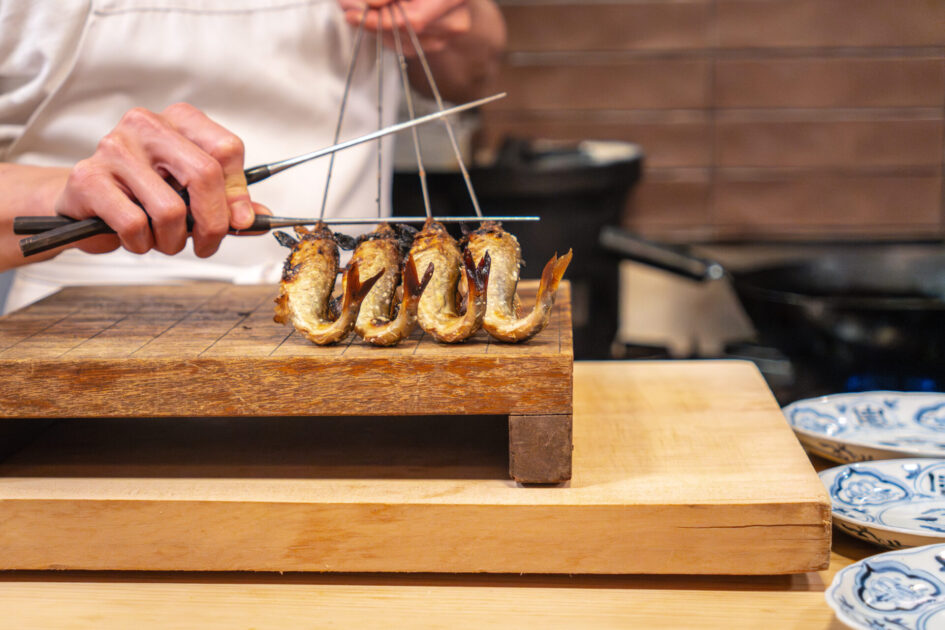CONTENTS
About Shokudo Miyazaki
Concept
Nestled quietly in a back alley along the Kamo River in Kyoto’s Kiyamachi district, Shokudo Miyazaki offers a serene retreat from the bustle of the city. Set in a traditional machiya townhouse with a long, narrow layout, this hidden gem serves a refined Japanese course menu inspired by the esteemed Shokudo Ogawa.
Each dish reflects a deep sense of aesthetic in its quiet simplicity — from the delicate aroma of dashi to the precise control of heat and the thoughtful space left on the plate.
It’s the kind of place perfect for “a slightly special night” that still feels like a natural extension of everyday life — unpretentious, warm, and quintessentially Kyoto.
About the Chef
Chef Miyazaki, the owner, trained for many years at Kyoto’s renowned Shokudo Ogawa before being entrusted with the role of leading Shokudo Miyazaki as something of a “sister restaurant.”
While grounded in the techniques and sensibilities passed down from Ogawa, Chef Miyazaki brings his own gentle presence and quiet strength to the entire dining experience. His serious and sincere approach is never rigid; instead, his calm demeanor and intuitive sense of timing in cooking create a sense of ease and comfort.
Driven by a philosophy of “unpretentious Japanese cuisine that you could eat every day,” his dishes convey both the trust placed in him and the depth of experience he has steadily built over the years.
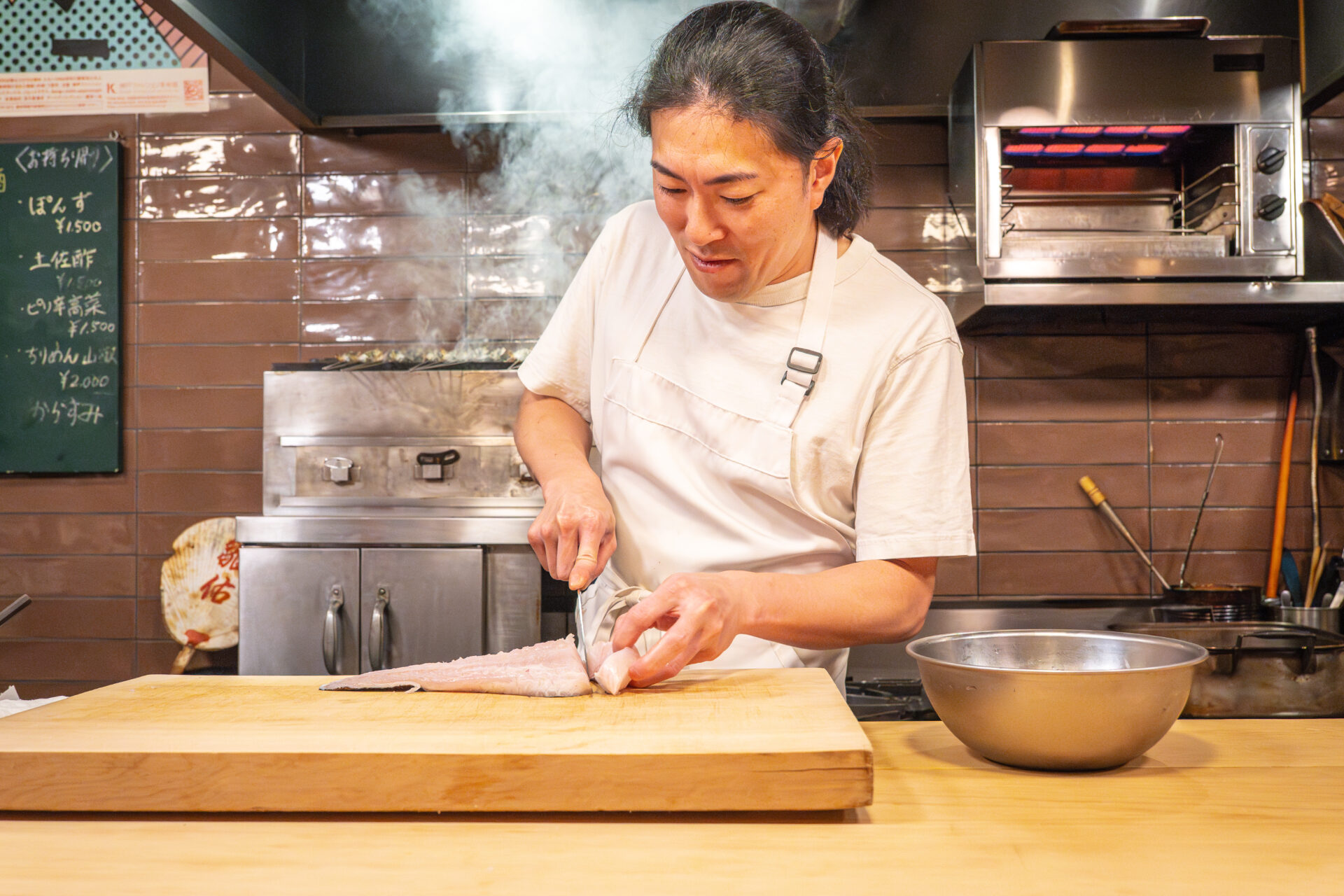
Restaurant Review
Though Shokudo Miyazaki has only been open for a few years, it has quietly built a reputation among Kyoto’s discerning diners and those in the culinary industry. While it hasn’t yet earned Michelin stars or mainstream acclaim, it’s widely respected for its honest, skillfully executed cuisine that follows in the footsteps of Shokudo Ogawa, as well as for its unwavering dedication to quiet excellence.
Rather than relying on walk-in traffic, many guests come by introduction or through private bookings — a testament to the trust and high satisfaction it inspires.
There are no gimmicks, no flashy headlines — just the simple fact that people return, again and again. That alone speaks volumes about what Shokudo Miyazaki offers.
Dining Prelude
Exterior & Entrance
With its beautifully preserved machiya façade, Shokudo Miyazaki evokes a nostalgic warmth, even for first-time visitors. The plastered earthen walls, natural wood framing, and crisp white noren curtain give the entrance a quiet elegance. The restaurant’s name, brushed in modest calligraphy, adds a sense of poised tranquility.
Bonsai and potted plants are neatly arranged beside the entrance, creating a seamless blend of everyday life and refined cuisine — a gentle ambiance that feels like a continuation of daily living.
Stepping through the doorway, you’re immediately greeted by the counter seating. This narrow passage, like a quiet prologue, sets the tone for the serene narrative that unfolds within.
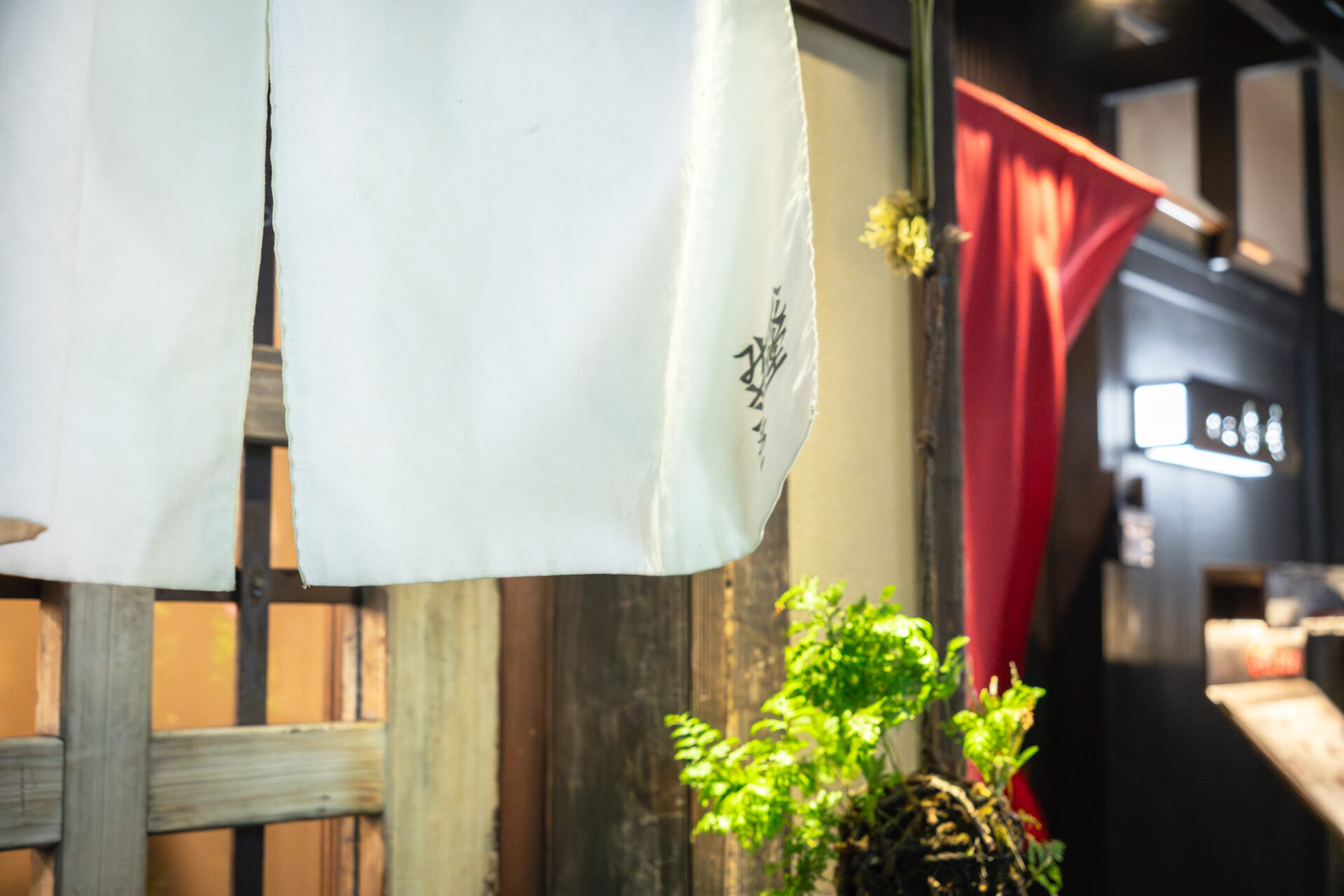
Dining Space
The heart of Shokudo Miyazaki lies in its beautifully crafted L-shaped counter on the first floor. Made from a single slab of natural wood, it gently wraps around the dining area, embracing guests and drawing them into the chef’s world. From this vantage point, diners can watch and listen as each dish is prepared — a truly immersive experience.
There’s no separation between kitchen and dining room, allowing guests to witness every step of the culinary process with all five senses. The walls, with their warm earthen finish, and the subtle lighting highlight the texture of the wood, adding to the intimate atmosphere.
Though the space is compact, it fosters a deep sense of connection and focus. The layout naturally cultivates a quiet trust between chef and guest, balancing just the right amount of tension and comfort — a space that embodies the essence of Shokudo Miyazaki.
Menu Presentation
While the daily dishes are written on a chalkboard, the meal is actually served in an omakase (chef’s choice) style, carefully curated based on seasonal ingredients and daily market offerings. At the warm counter, guests can enjoy leisurely conversation with the chef while savoring each course at a relaxed pace.
Starter Drink: Sudachi Sour
Once seated at the counter, the first drink served — a favorite at private gatherings — was a refreshingly bright sudachi sour. A whole sudachi citrus floated in the glass, its vibrant aroma rising gently with each sip. The lively carbonation and soft acidity awaken the palate, followed by a pleasant bitterness that stirs a quiet appetite.
Behind the drink, the polished counter gleamed and the chefs worked with calm precision — a backdrop that pulled us naturally into the restaurant’s world. It wasn’t a flashy start, but rather, an honest, well-crafted one — the perfect introduction to what Shokudo Miyazaki is all about.
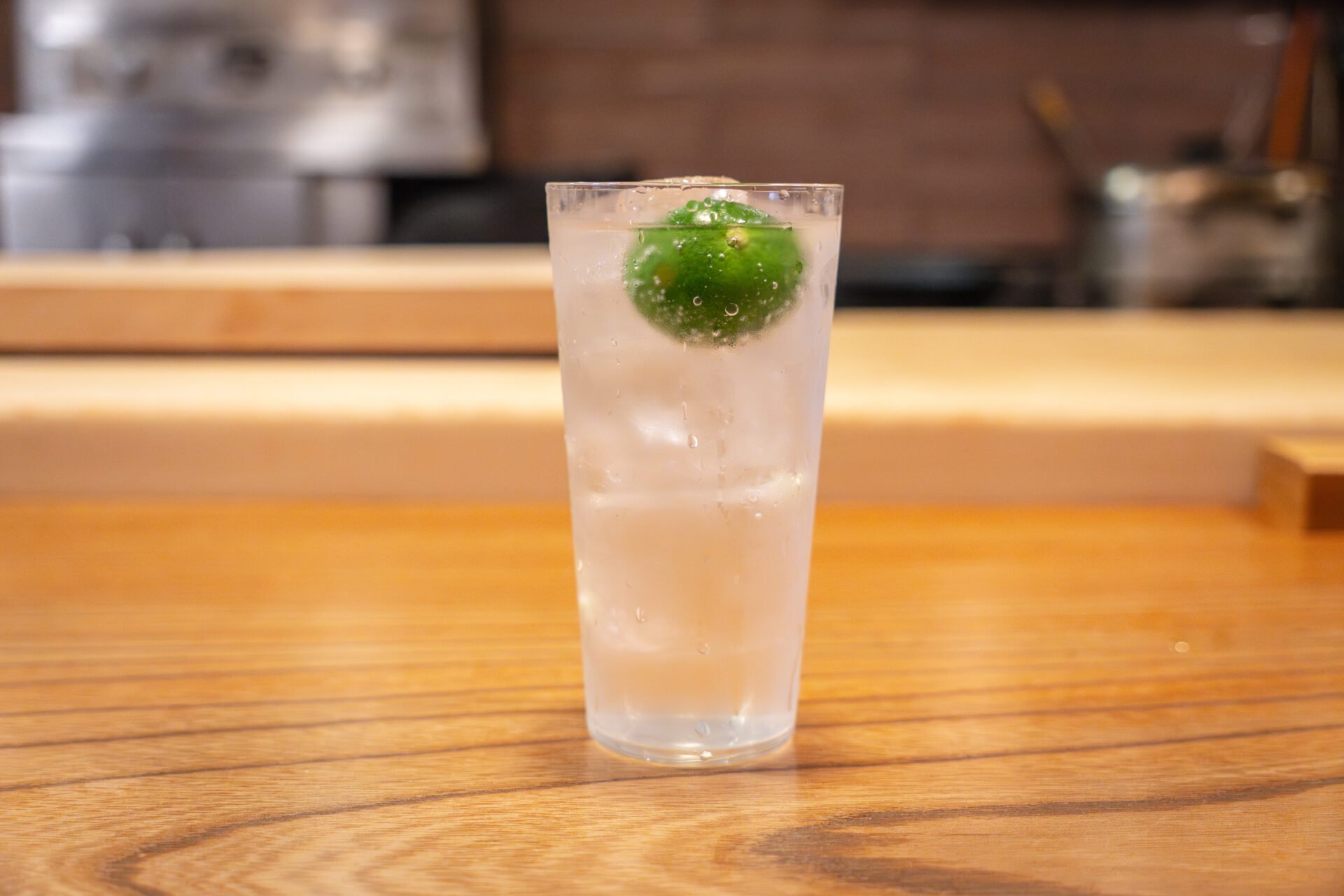
Dishes Tasted at Shokudo Miyazaki
Chawanmushi with Lily Bulb
The course opened with a warm, gently steaming bowl of chawanmushi. As the aroma of dashi softly rose, it immediately set a calm, attentive tone. Inside were tender lily bulbs with their subtle sweetness, paired with konowata—salted sea cucumber intestines—bringing a rich umami depth. The silky egg custard harmonized the two, creating a quiet, lingering elegance in the mouth. A deceptively simple dish, yet layered and profound—purely reflective of Shokudo Miyazaki’s philosophy of restraint and resonance.
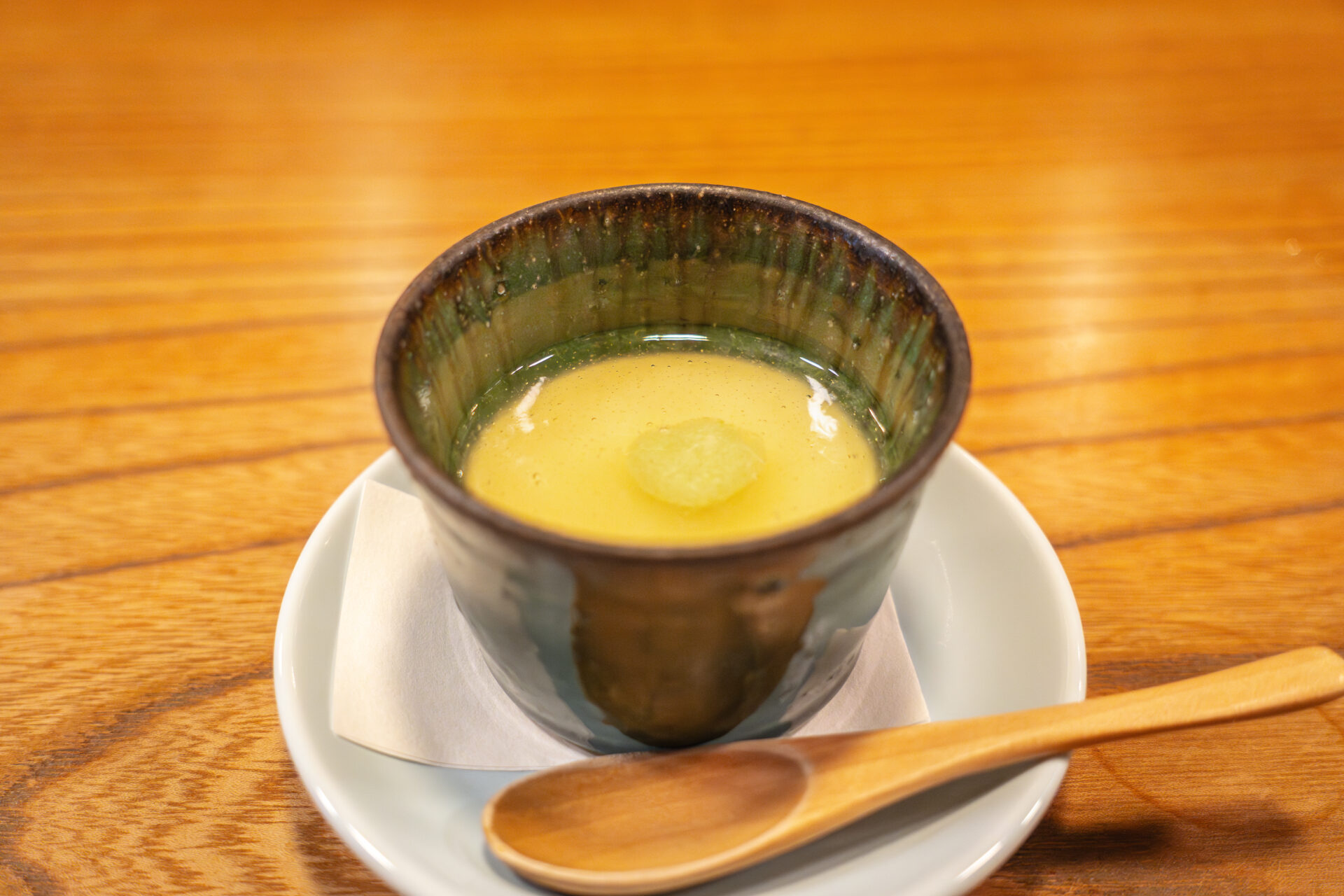
Snap Peas with Sesame Dressing
Vibrant green snap peas, lightly boiled and carefully trimmed, burst with natural sweetness. The sesame sauce, smooth and aromatic with a hint of vinegar, delicately coated the vegetables. A touch of yuzu zest added a crisp fragrance, leaving a refreshing finish. Served in a cool glass bowl, it visually captured the freshness of the season—an appetizer that quietly showcases the beauty of balance and simplicity in Japanese cuisine.
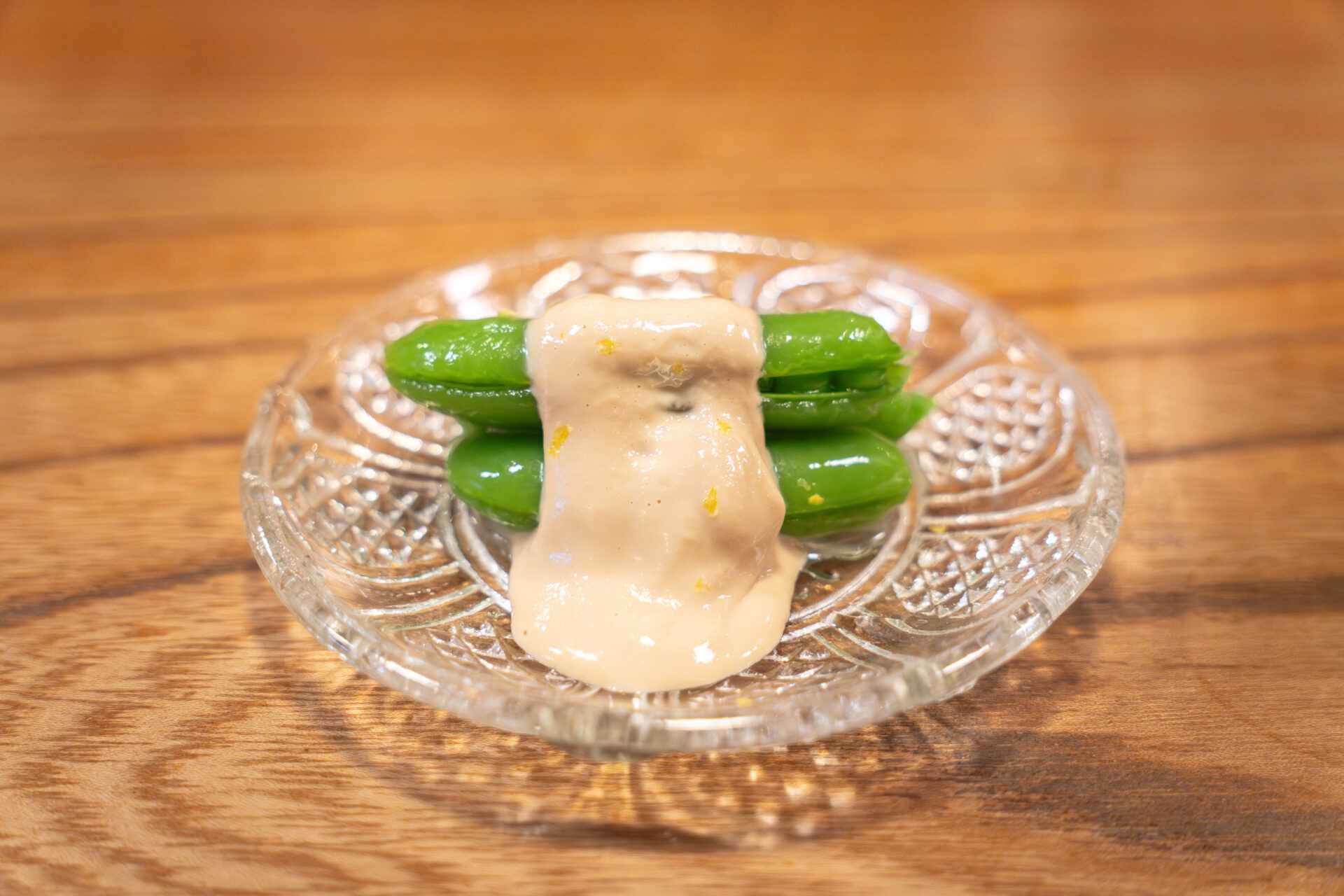
Corn and Burdock Kakiage
Golden and crisp, this small kakiage fritter arrived with a toasty aroma. Sweet, plump corn and earthy burdock root were held together by a whisper-light batter. The interplay of textures and aromas unfolded pleasantly with each bite. Not at all greasy, it remained crispy even as it cooled. The oil gently absorbed into the washi paper beneath added an elegant touch to this refined take on a humble favorite.
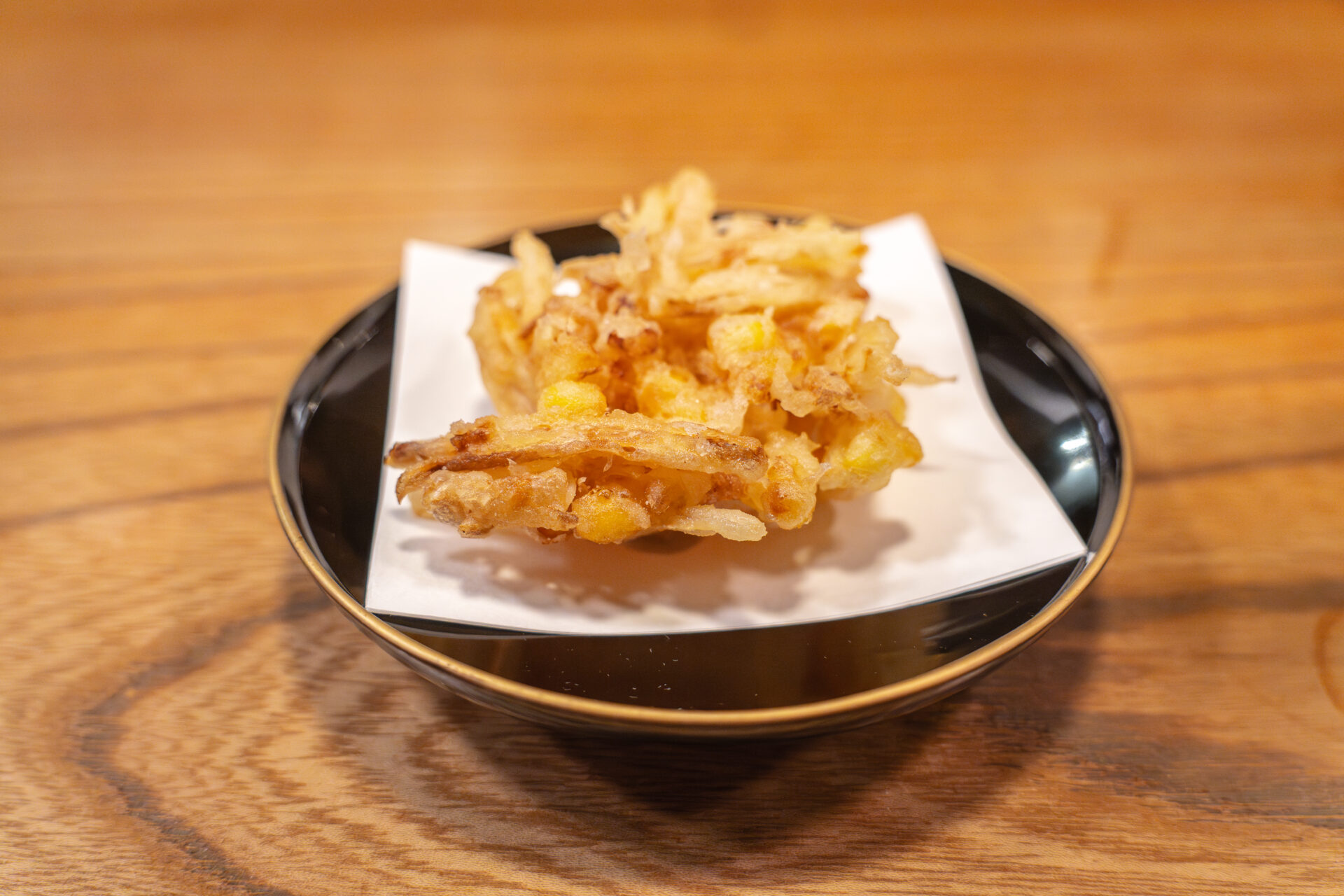
Simmered Clams and Winter Melon
Plump clams and tender tōgan (winter melon) arrived glazed in a glossy, umami-rich broth. The aroma of the sea was immediately present. The clams were perfectly cooked—tender, not rubbery—and gently sweet. The winter melon, having absorbed the savory broth, nearly melted on the tongue. A hint of yuzu zest uplifted the dish, adding a light, fragrant clarity to its rich base. A testament to the precision and subtlety of Japanese simmered dishes.
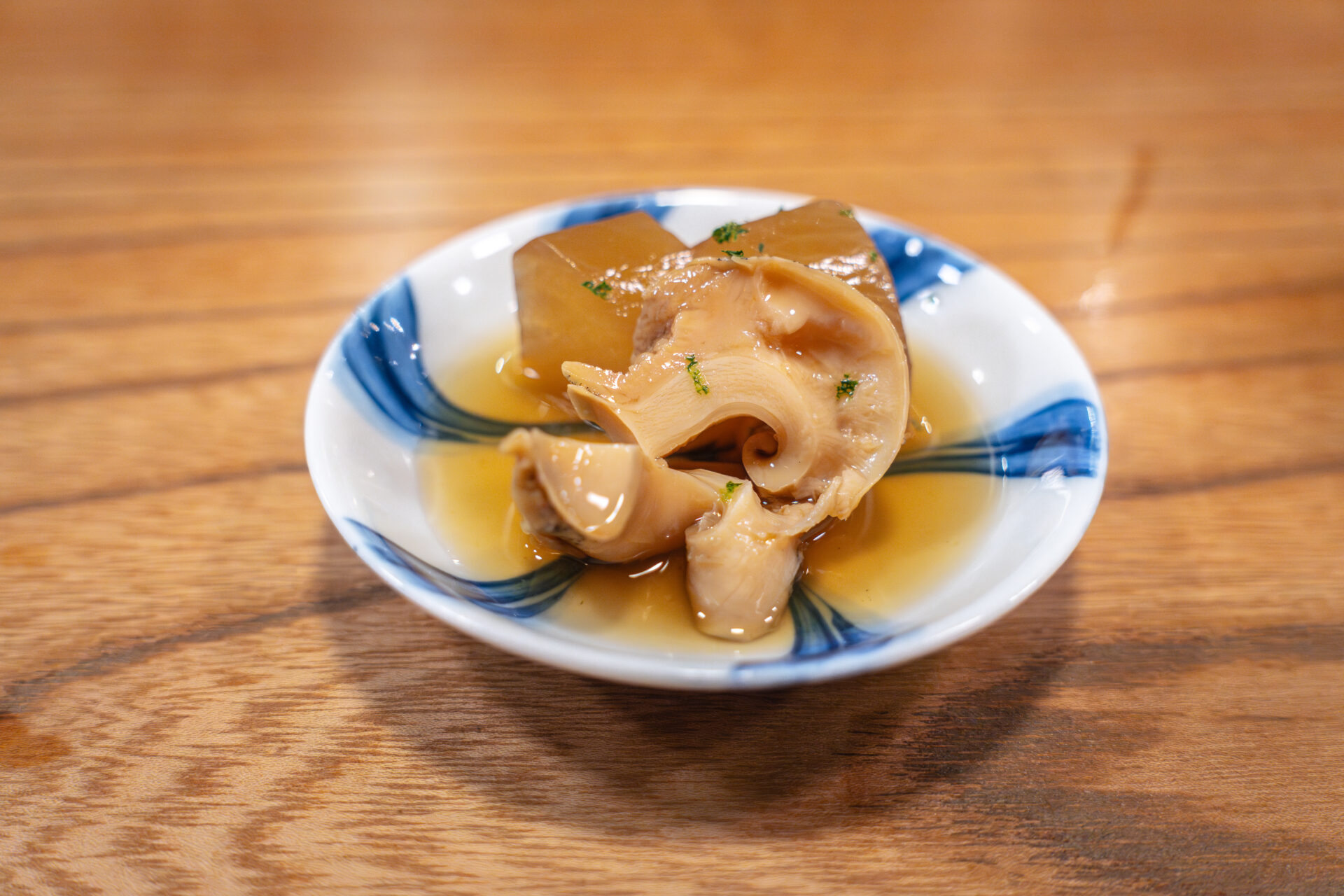
Sashimi: Pike Conger (Hamo) and Squid
A quintessential taste of Kyoto summer. On a pale ceramic plate, the delicately prepared hamo (pike conger), expertly honegiri-cut and lightly blanched, offered a fluffy, melt-in-your-mouth texture with refined sweetness and fat. The squid was silky and slightly sticky, its pure umami unfolding slowly. The textures contrasted and complemented each other in a quiet symphony. With freshly grated wasabi and a carefully balanced soy sauce, this was a dish that whispered of seasonality and skill.
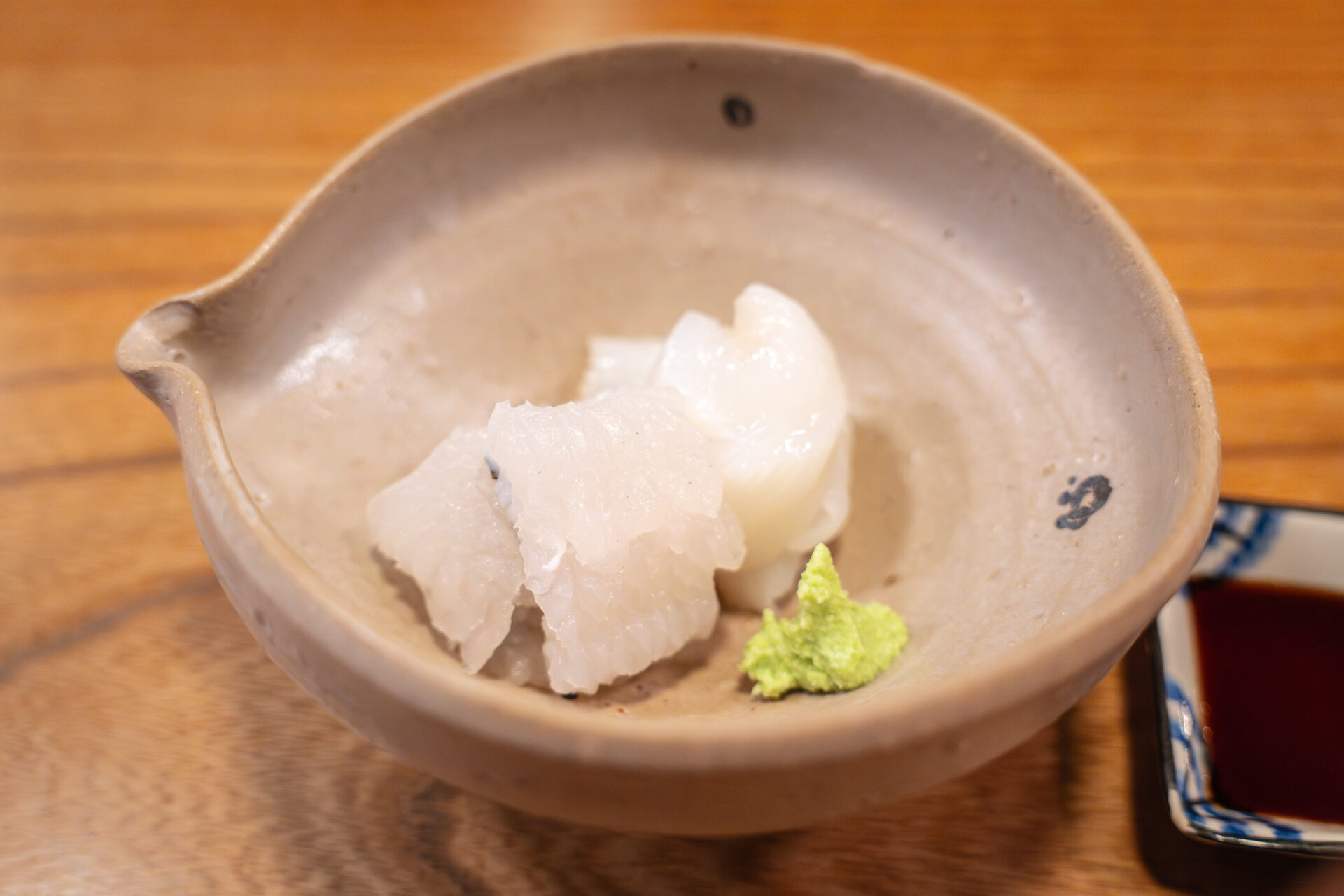
Signature: Karasumi Mochi (Served by Hand)
One of Shokudo Miyazaki’s iconic bites. A crisp sheet of roasted seaweed wrapped around a soft, chewy mochi with rich, melting karasumi (salted mullet roe). Handed directly by the chef—a graceful, informal gesture—the salty depth of the roe blended beautifully with the sweetness of the mochi. Served alone, without rice or broth, it was bold in its simplicity. A fleeting moment, but a lasting memory.
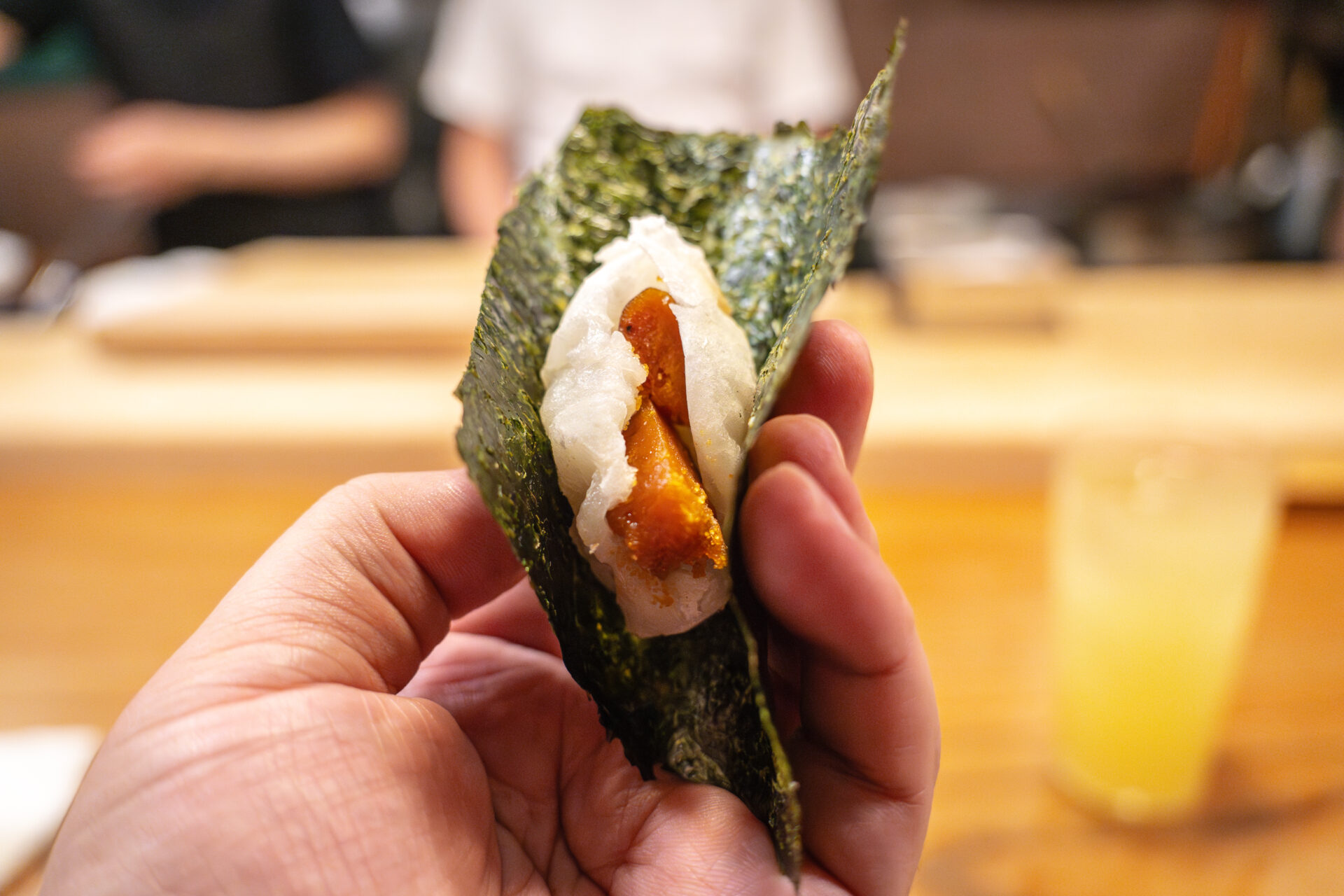
Sōmen Noodles in Dashi with Sanshō Leaf
Toward the end of the course, a bowl of delicate nyūmen appeared—thin wheat noodles in a clear, umami-rich broth. Topped with a sprig of aromatic kinome (sanshō leaf), the soup was gentle yet grounding. The clean broth wrapped around soft wakame and smooth noodles, while the herb added a refreshing lift. A quiet, graceful conclusion that enveloped the memory of the meal in fragrance.
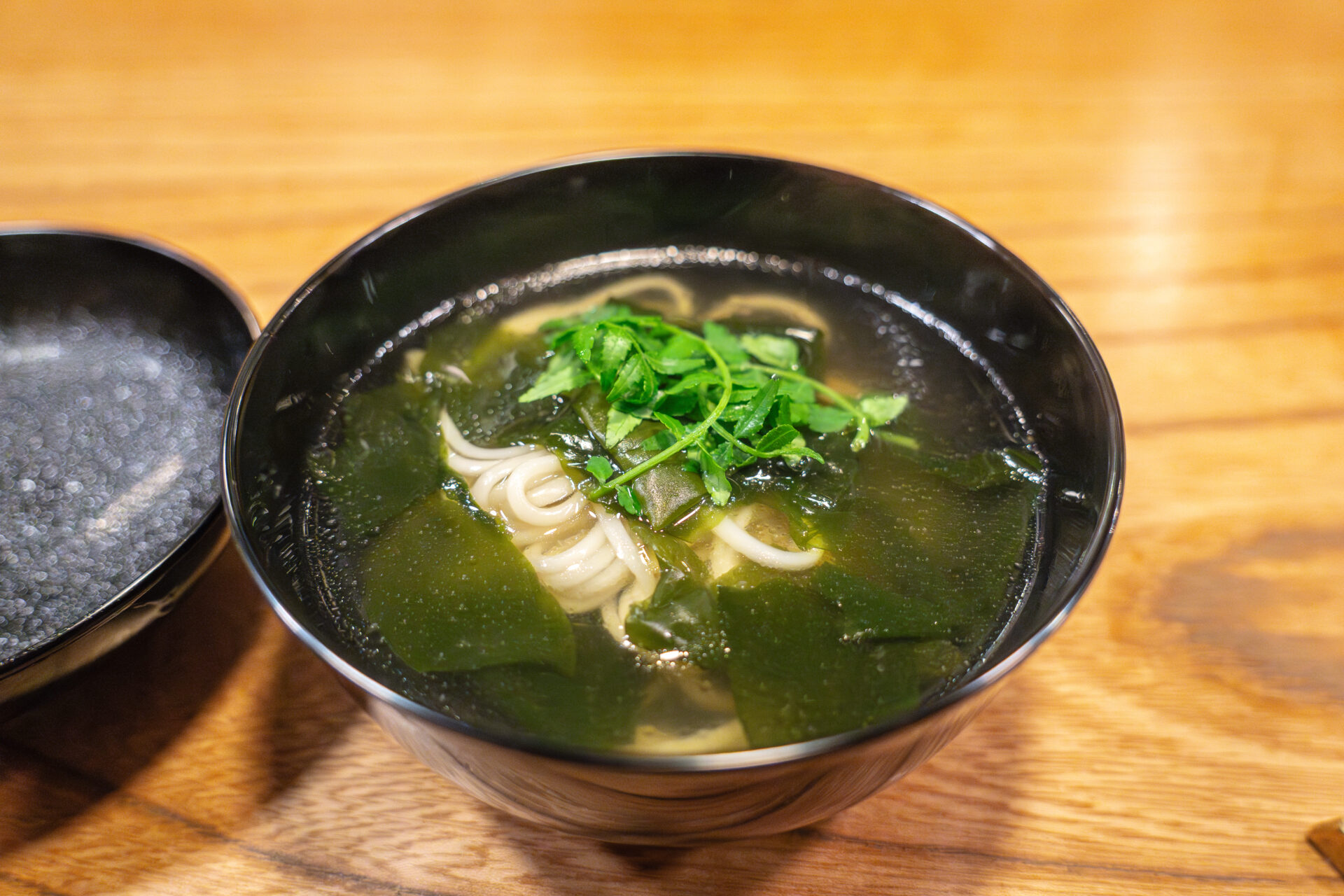
Salt-Grilled Young Ayu (Sweetfish)
At the counter, the chef calmly skewered each ayu before slowly grilling them over an open flame.
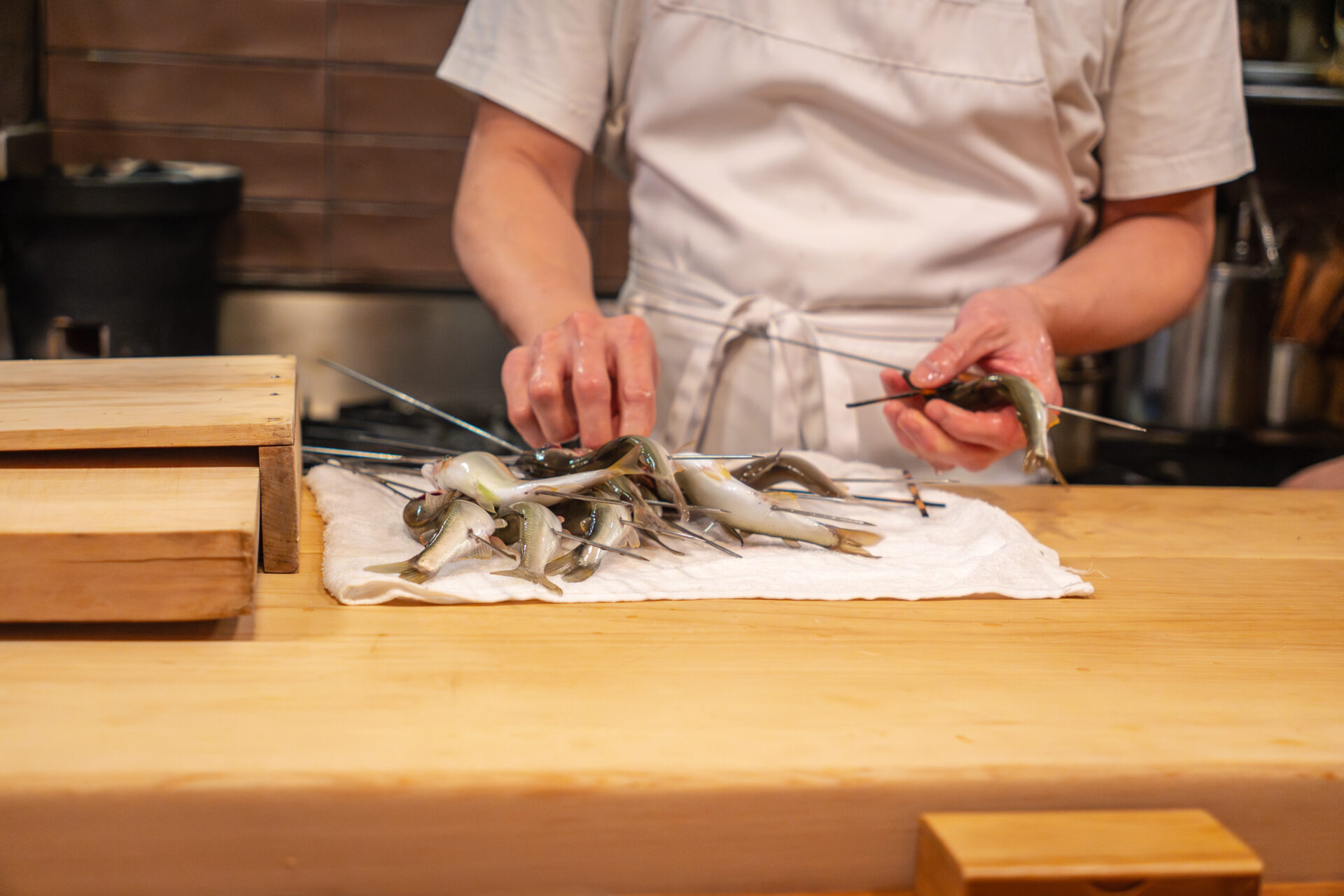
The skin crisped to perfection, while the interior remained soft and moist. The mild bitterness of the young fish’s innards and the clean flavor of its flesh were in exquisite balance.
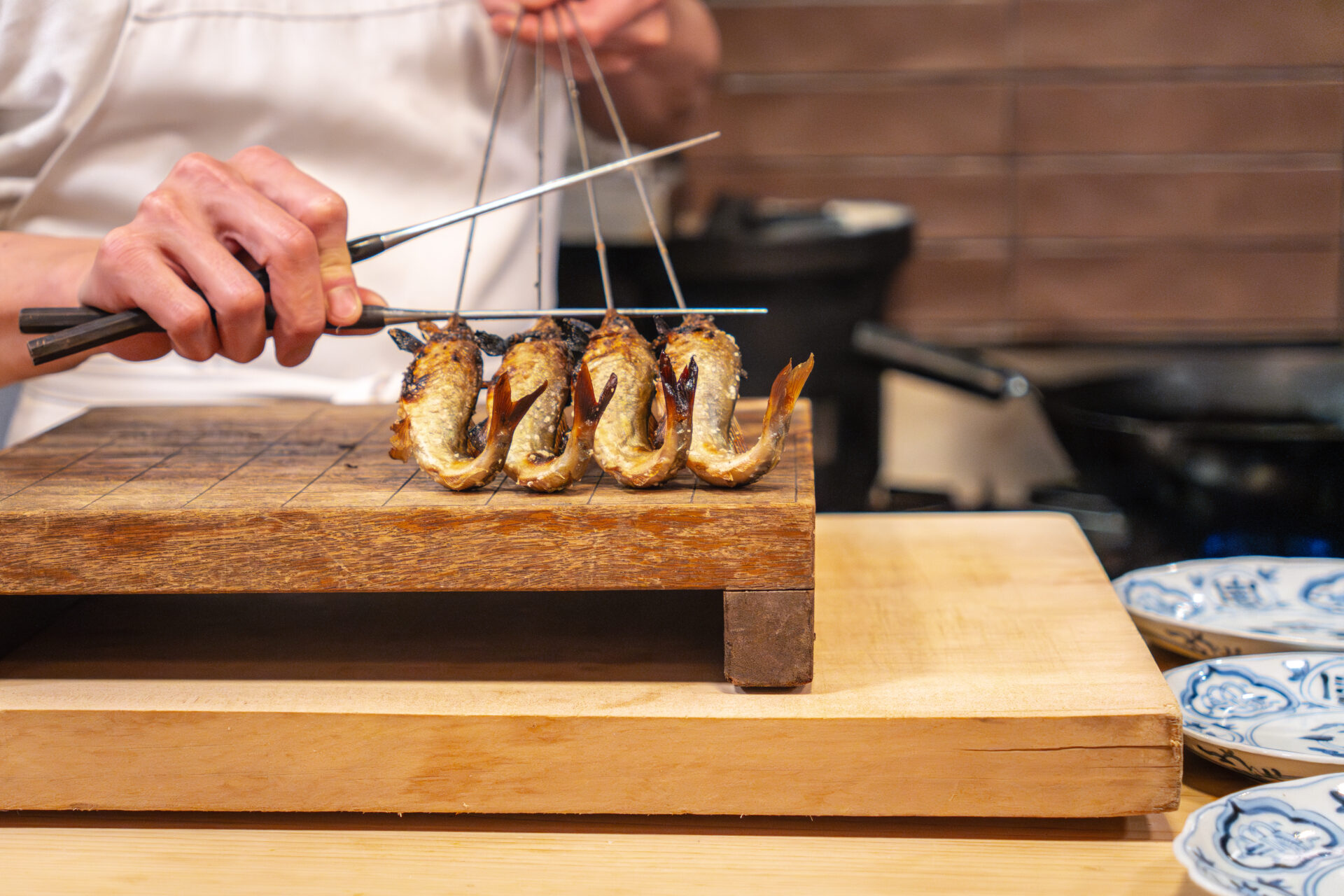
Served on an antique-style Ko-Imari plate, this dish embodied the season and traditional craftsmanship. The saying “three years to skewer, a lifetime to grill” felt apt—each element refined to perfection.
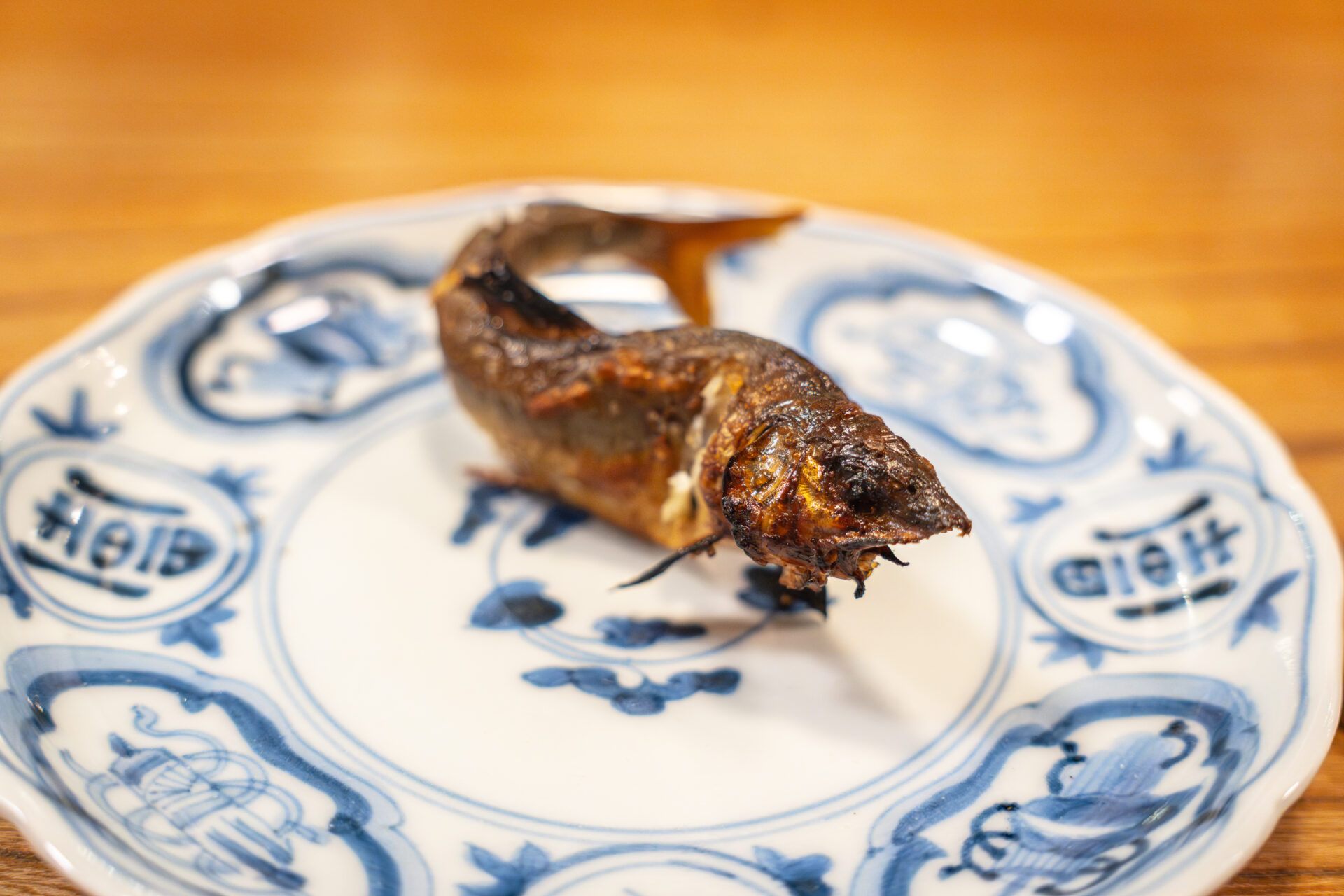
Drink: Miyaball (Shikuwasa Highball)
A house favorite named after Chef Miyazaki himself. This refreshing highball blended whisky with fresh shikuwasa citrus juice, striking a beautiful balance of gentle bitterness and tangy brightness. Simple in appearance, yet layered in taste—its citrus aroma lingered subtly, echoing the meal’s refined tone. Ideal both during and after the meal. If you hear, “Shall we do a Miyaball?” across the counter, you know you’re part of the Miyazaki rhythm now.
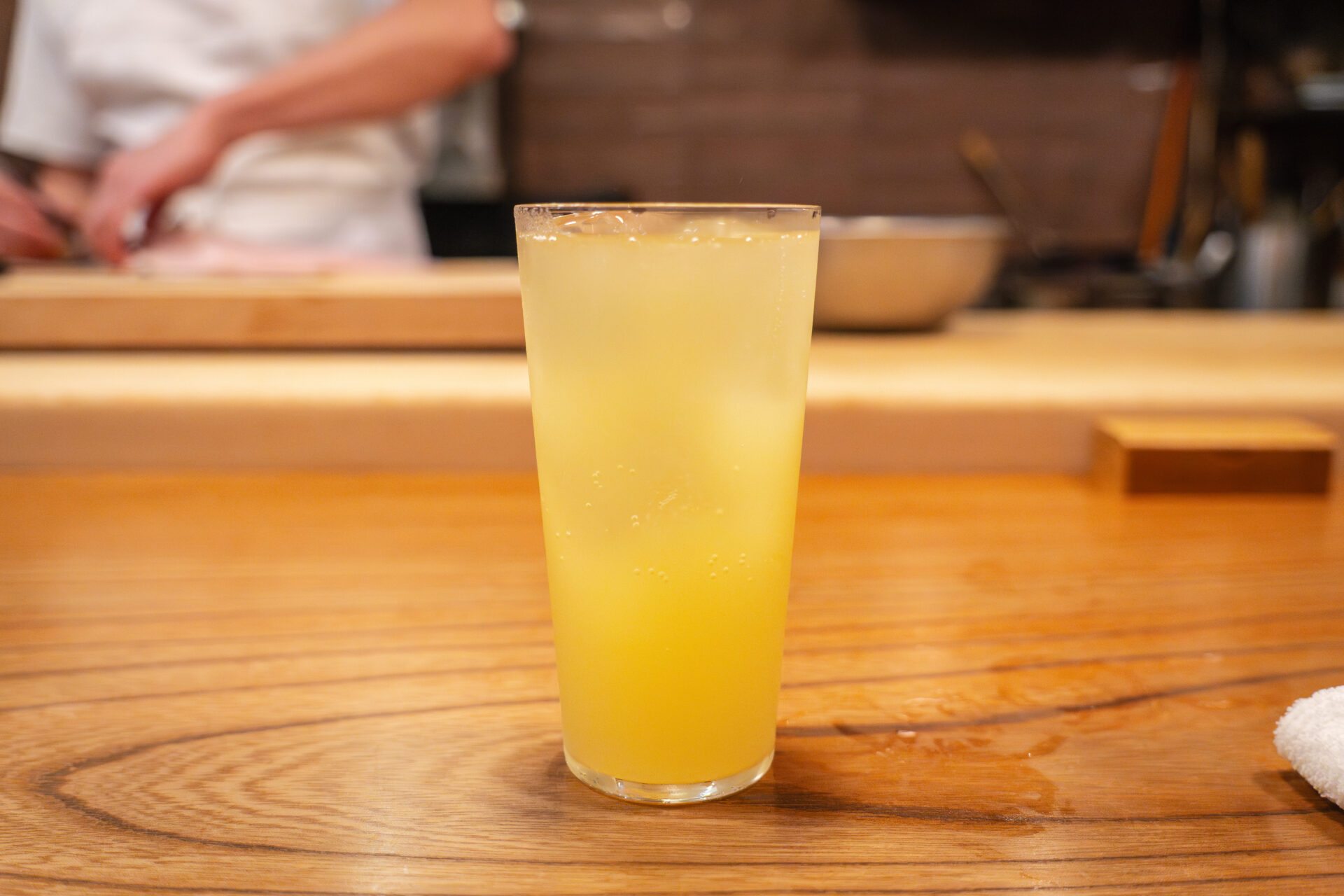
Tebakara (Fried Chicken Wings)
A standout within the course, these fried wings were deeply seasoned and fried to a crackling crisp. Inside, the meat was juicy and packed with flavor, yet easy to eat thanks to precise trimming. A dab of wasabi cut through the richness and refreshed the palate. A bold, satisfying bite that brought energy and playfulness to the otherwise serene meal—perfect with a drink.
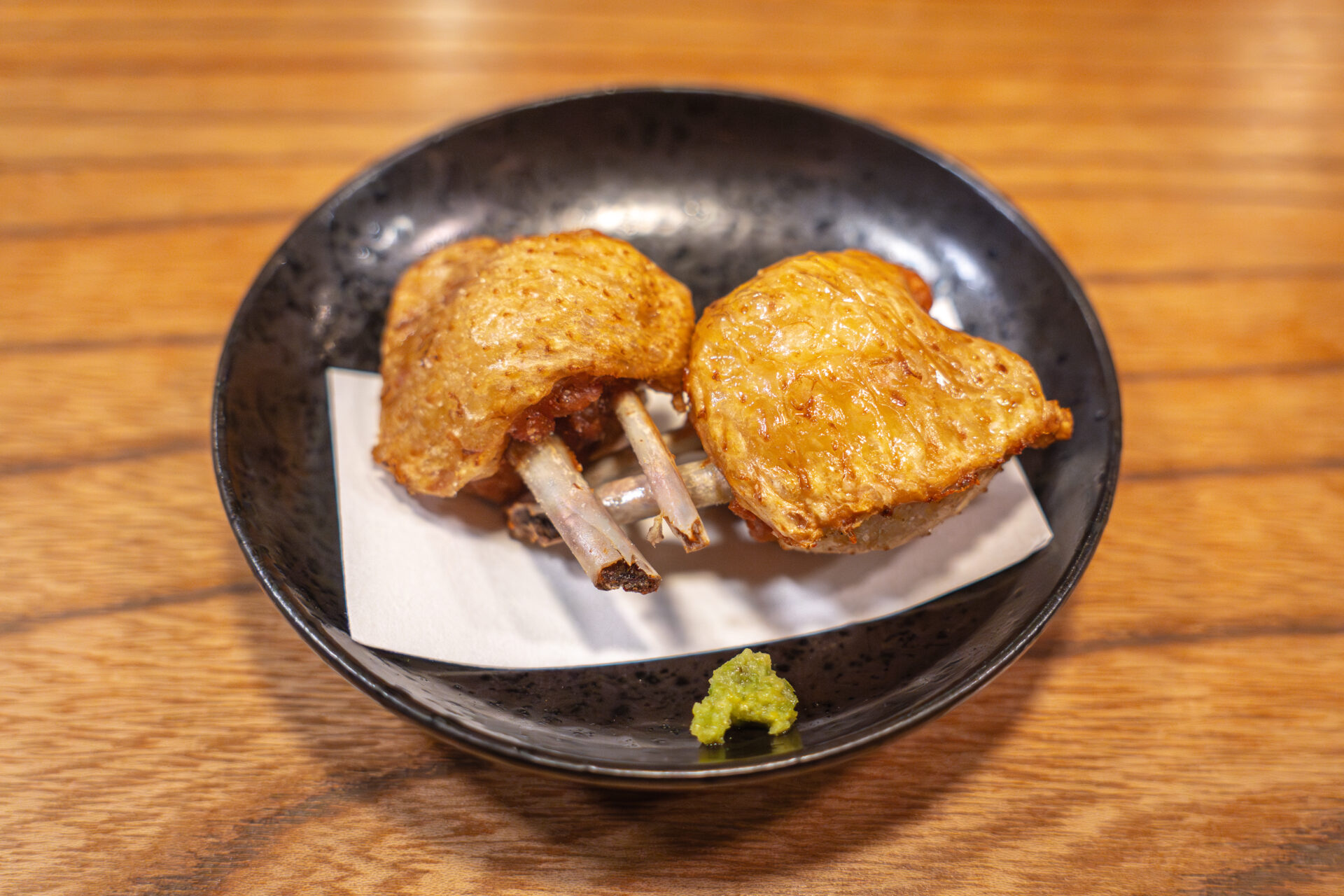
Palate Cleanser: Chilled Tomato, Mizunasu, and Cucumber in Dashi
After the richer fried and grilled dishes, this chilled dashi soup refreshed both body and mind. Tomato offered gentle acidity, mizunasu (water eggplant) lent a soft texture, and cucumber added a green aroma. The broth tied everything together with grace. A quiet pause that realigned the senses, embodying the subtle, seasonal beauty of summer Japanese cuisine.
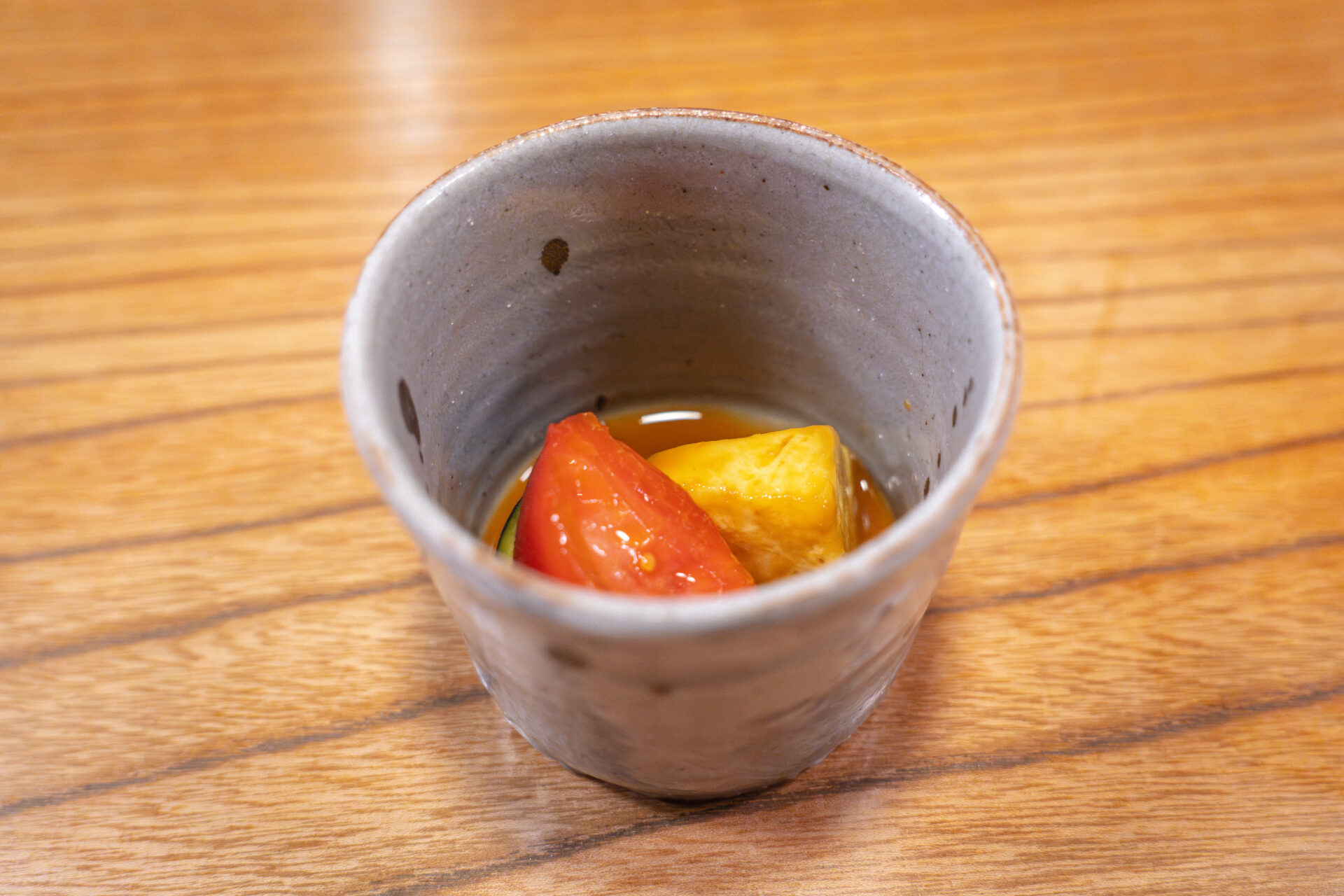
Simmered Sea Bass (Suzuki)
Richly simmered in a dark, glossy soy-based sauce, the sea bass was luxuriously fatty and thick-cut. Cooked just right—not too soft, not falling apart—it soaked up the bold, sweet-salty glaze.
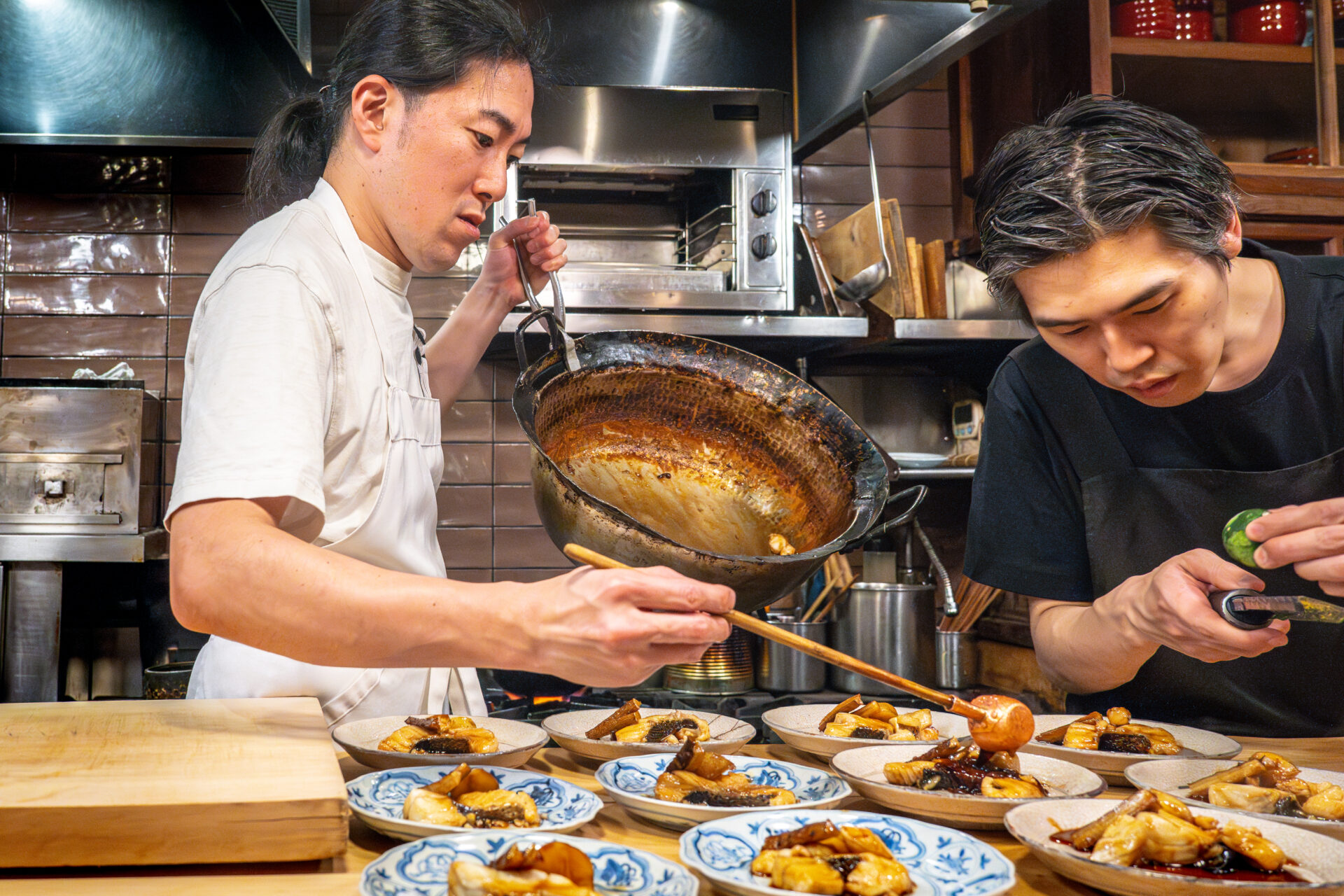
Root vegetables like burdock accented the dish with earthy depth. Fragrant sanshō added lift and balance, making this a weighty yet elegant centerpiece in the course.
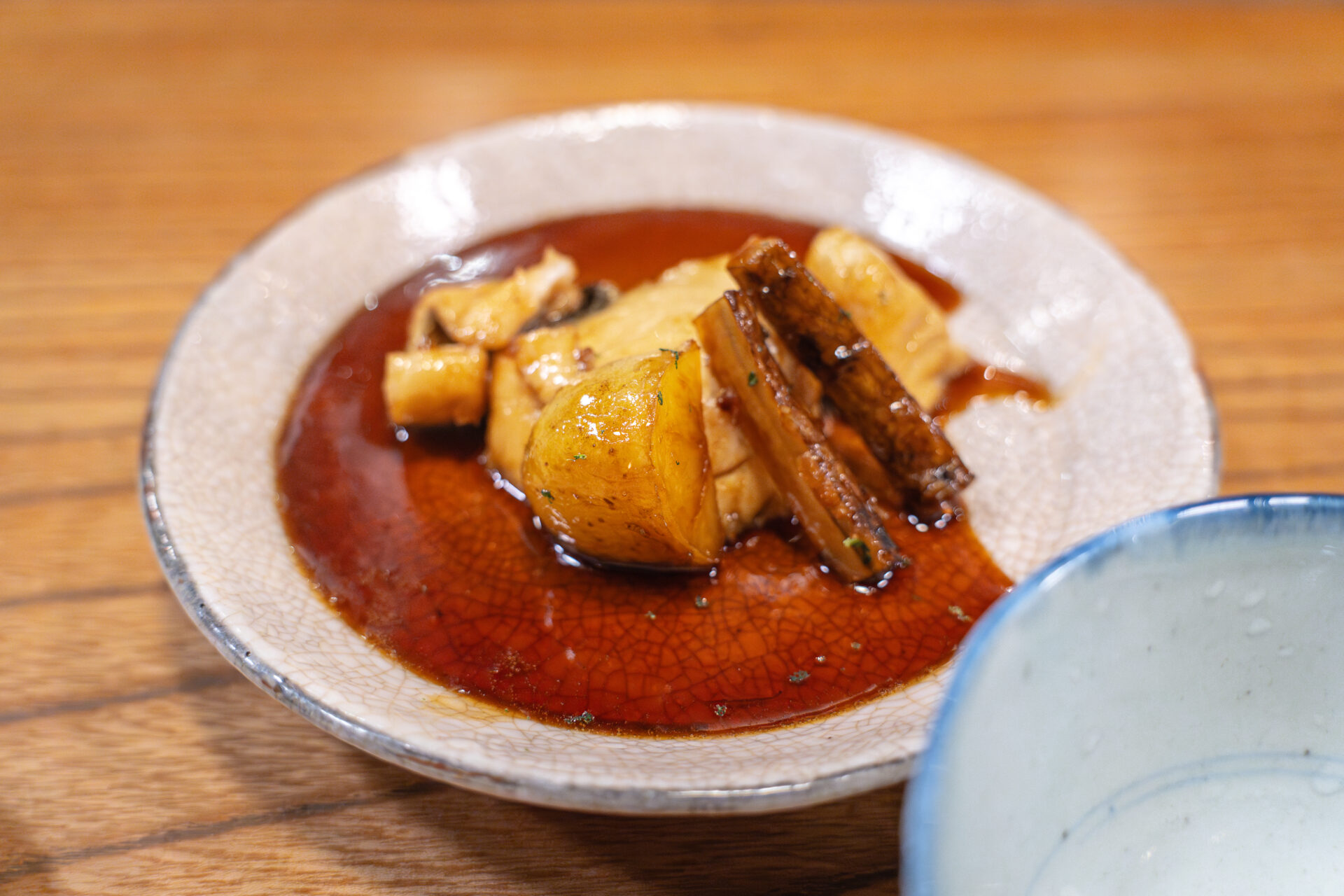
Rice with Egg Yolk and Simmered Sauce
To finish, a bowl of freshly cooked white rice was crowned with a golden egg yolk and a spoonful of the simmered sea bass sauce. A quick stir brought everything together—rich, savory, and deeply comforting. It recalled the earlier course while bringing the entire meal full circle in a satisfying, homey way.
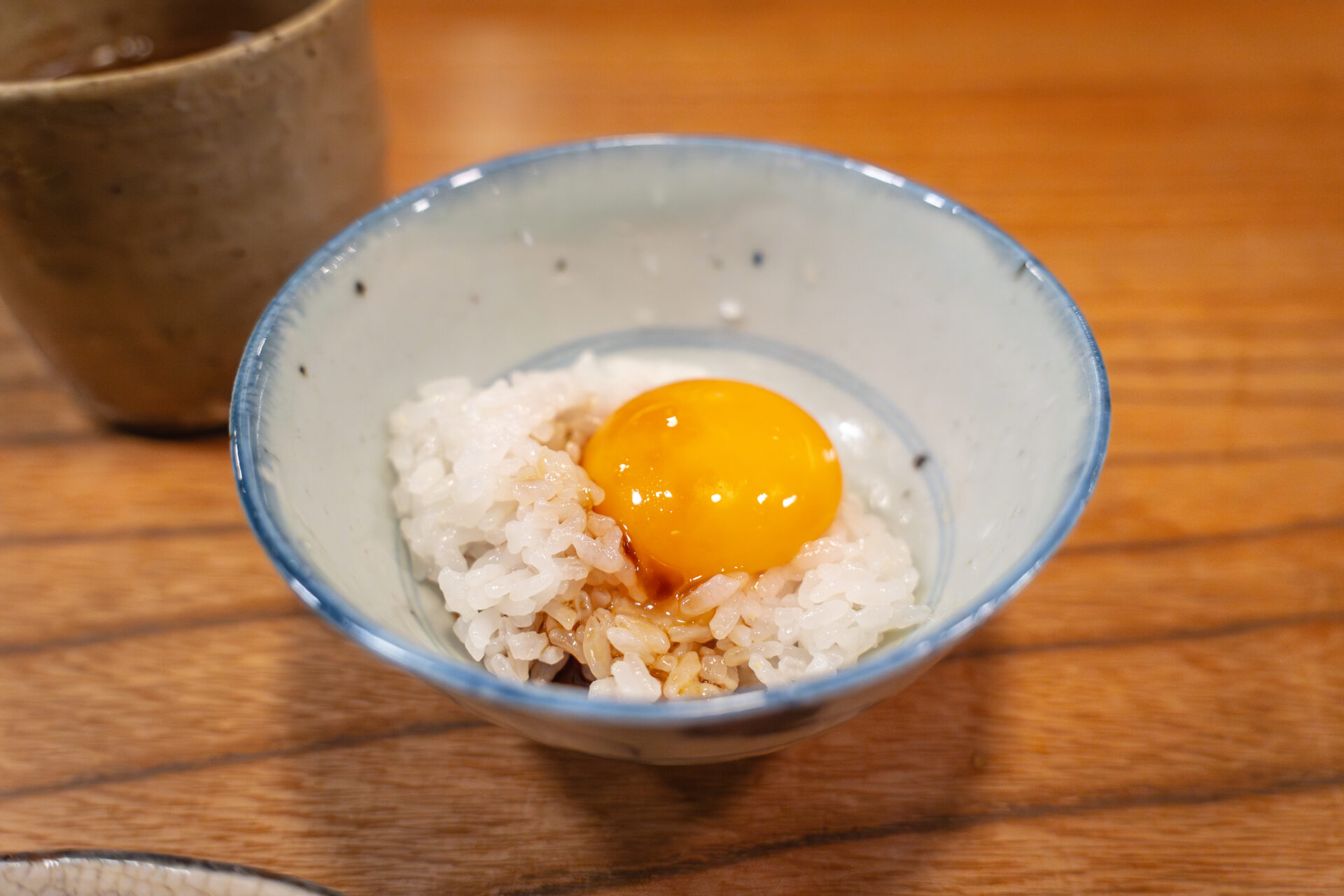
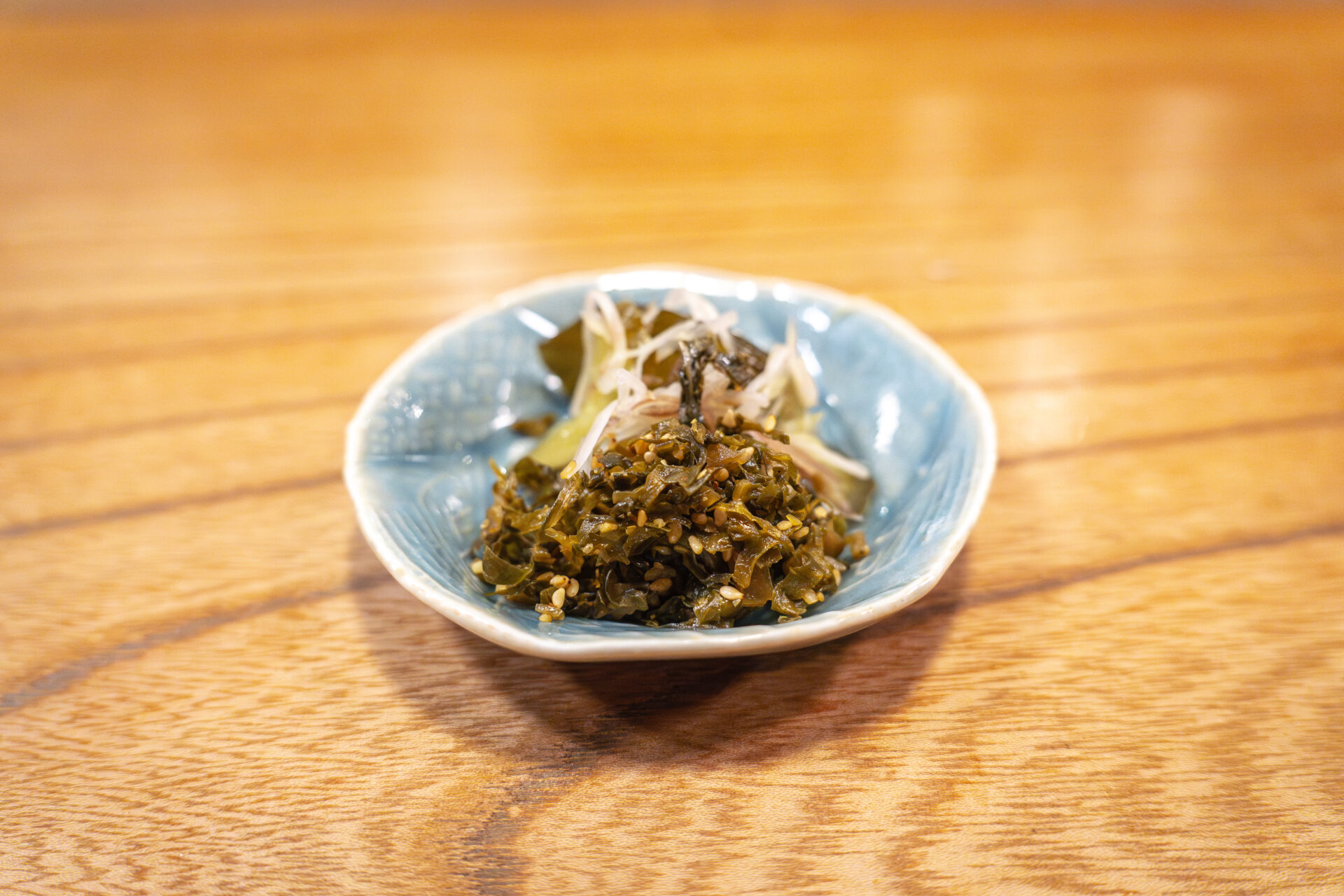
Side Dish: Fluffy Tamagoyaki
Served alongside the rice, this airy, cloud-like tamagoyaki oozed subtle dashi aroma. With minimal sweetness, it made a perfect match for rice. Light yet flavorful, it helped keep the meal’s final moments lively. Every detail—even in this humble piece—reflected the chef’s thoughtfulness.
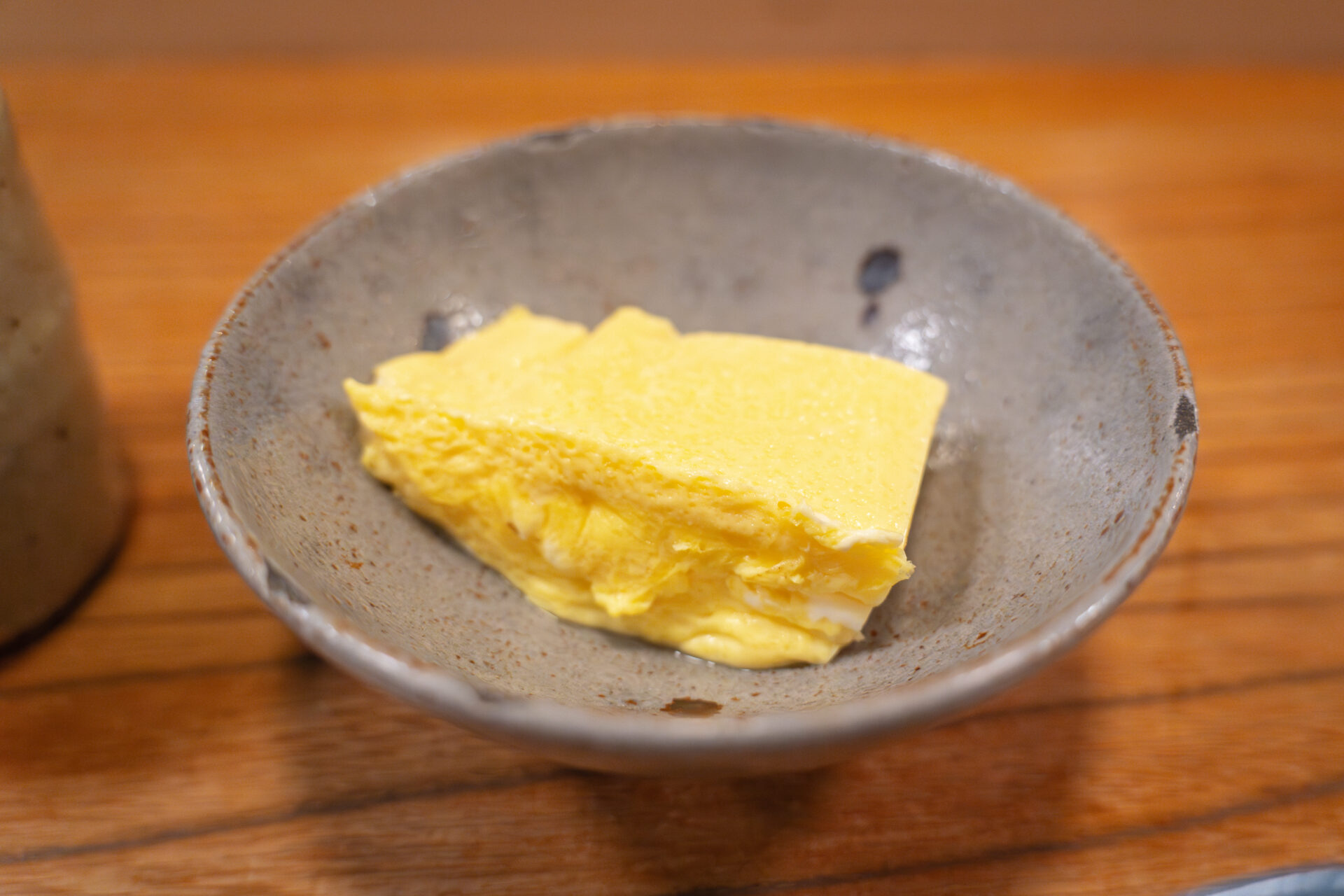
Second Serving: Butterbur Sprout Rice & “Miya Curry”
Though one might have been fully satisfied, the okawari (second serving) was impossible to resist. First came butterbur sprout rice, perfumed with the bittersweet scent of spring and served with miso flavored with sanshō leaves. Each bite evoked a seasonal landscape.
Then came the now-beloved “Miya Curry”—a house-made keema-style curry topped with chirimen sanshō (tiny dried sardines and pepper). Rich, spiced, and unmistakably Japanese, it was a surprising yet unforgettable finale.
Even just the rice offerings told a complete story—revealing the depth and range of Shokudo Miyazaki’s culinary spirit in its final chapters.
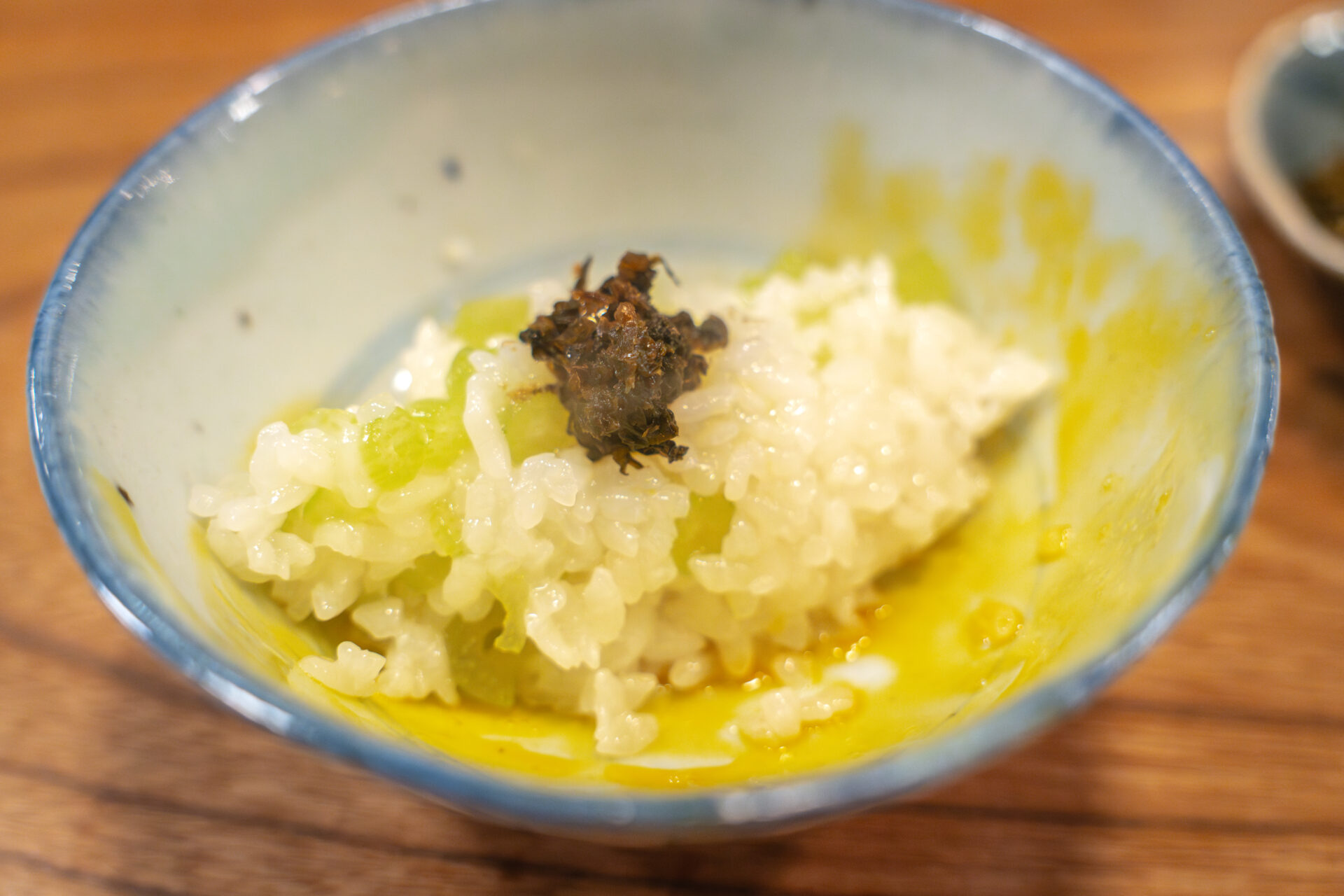
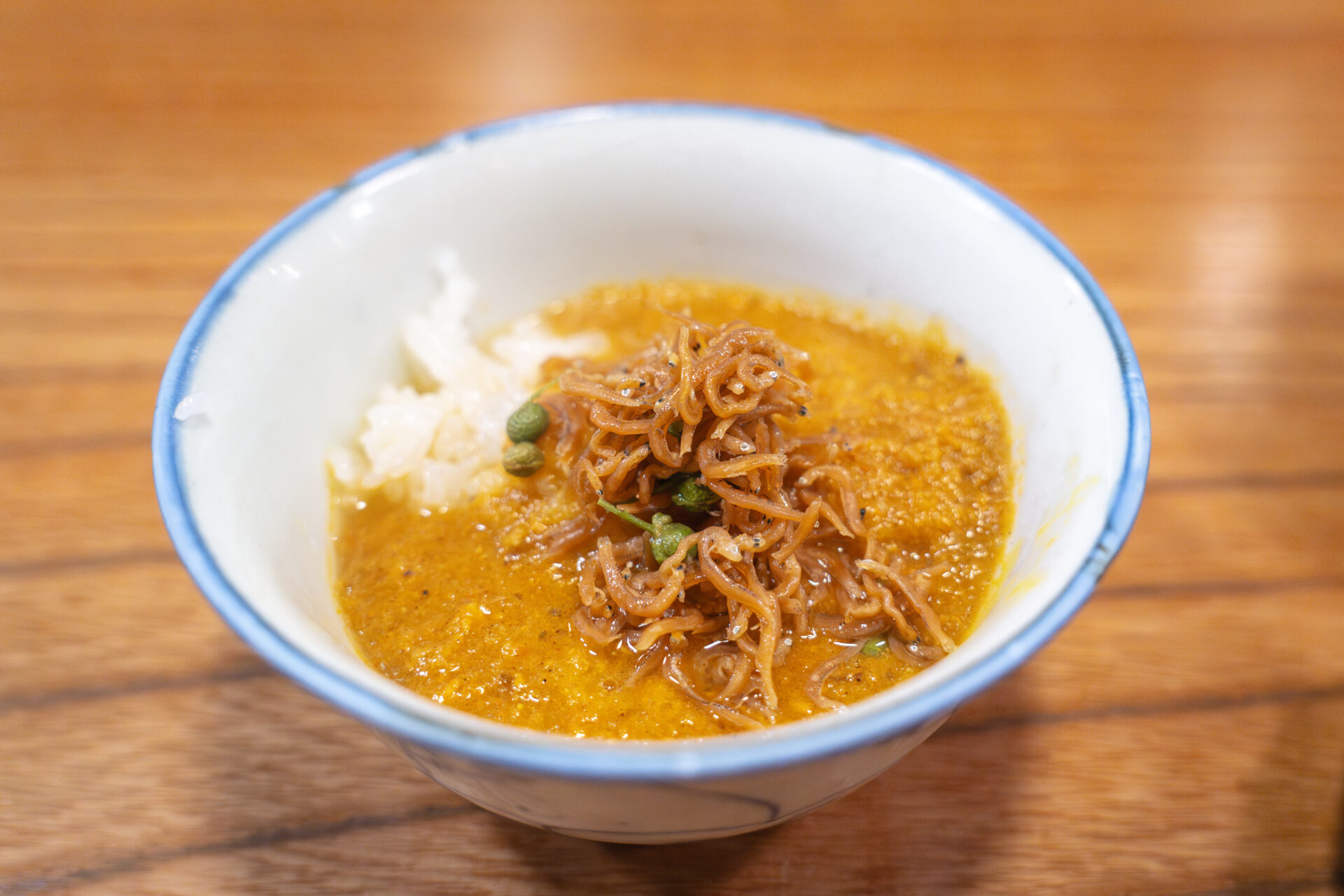
Summary and Impressions
Tucked away at the end of a narrow alley in Kyoto’s Kiyamachi district, Shokudo Miyazaki is a quietly beloved, reservation-only restaurant that’s gaining a reputation as one of the city’s hidden culinary treasures. On this evening, I was fortunate to join a private booking and enjoy a slow, flowing night at the intimate counter, usually buzzing with regulars.
The dishes—layered thoughtfully with seasonal aromas and textures—were humble yet unwavering in their character. Each plate captured the essence of Kyoto-style washoku: a balance of restraint and tension, warmth and stillness.
From the timing and temperature of each course to the soft-spoken words exchanged across the counter, the meal was not only food, but a quiet and deeply enriching experience.
And above all, the highlight was the gracious presence of Chef Miyazaki himself—his calm, generous conversation and exquisite cooking made it a night to remember.

Reservations & Access
Shokudo Miyazaki operates strictly by reservation. While it’s not exclusive to referrals, the limited number of seats often fills quickly with returning guests, making early booking essential.
Located just off Kiyamachi Street, the restaurant sits discreetly in a traditional machiya townhouse near the Kamogawa River. The nearest stations are Keihan’s Gion-Shijo and Hankyu’s Kyoto-Kawaramachi, both around a 5-minute walk away.
For the most up-to-date hours and booking information, be sure to check their official Instagram or social media accounts.
- TAGS

